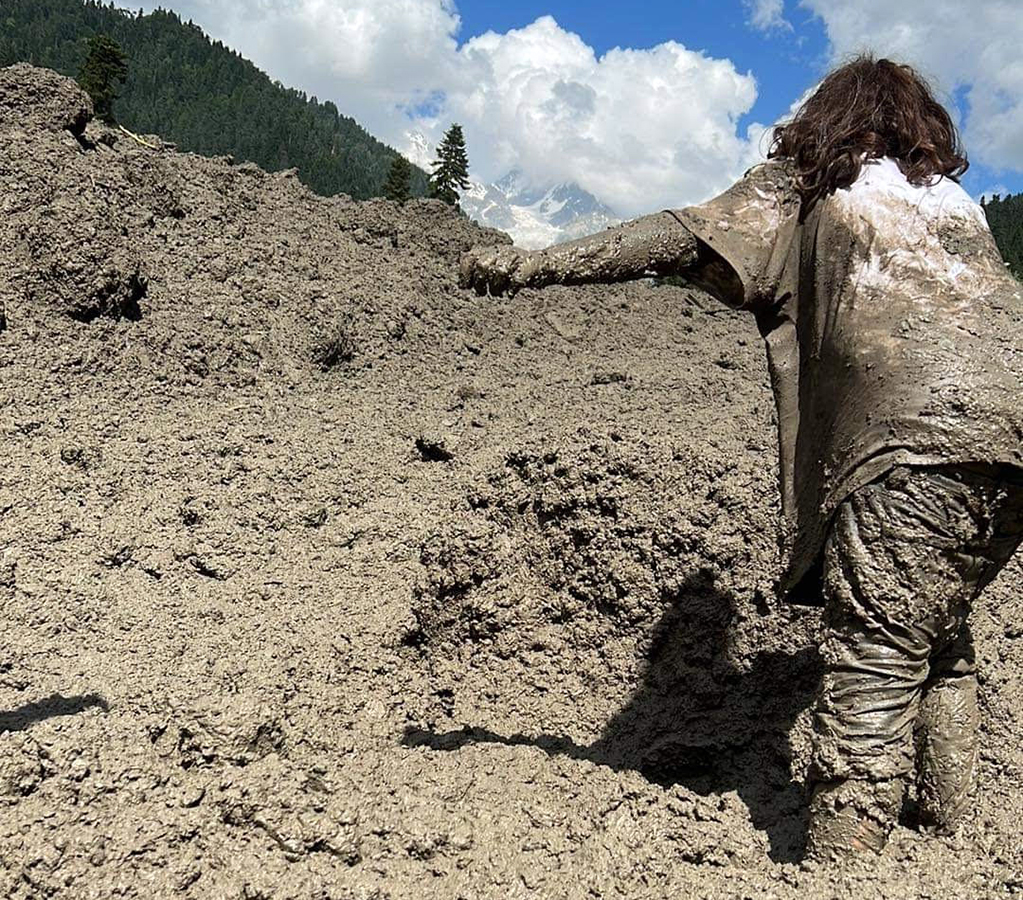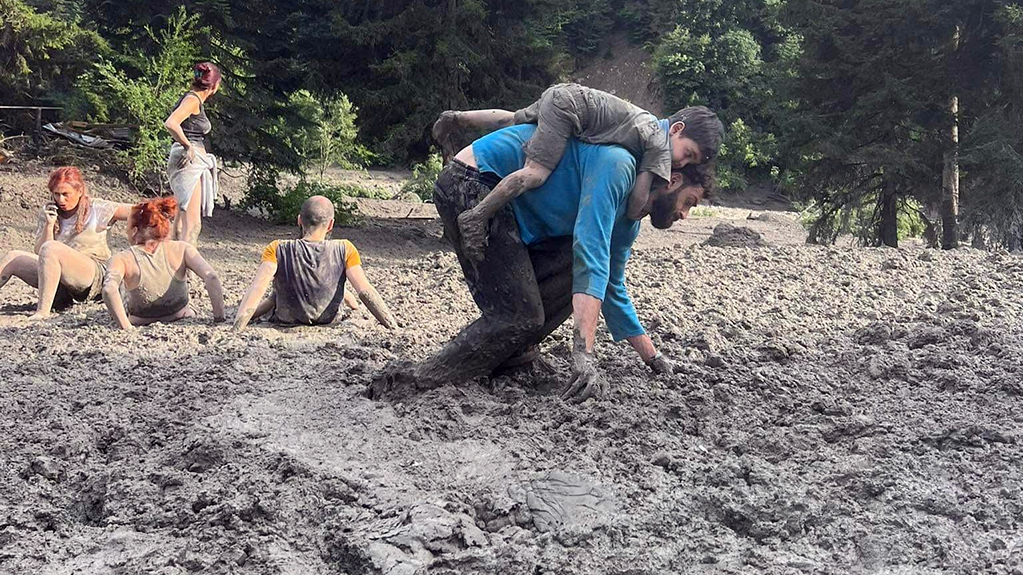In the final report on the Shovi tragedy, which was published a few days ago, the National Environment Agency attempts to deflect and shift responsibility away from the authorities for the deaths of 33 people.
News
Trending stories
- 1 Geostat: The Average Salary in Georgia Is 2,271 GEL
- 2 Starting in 2026, First-Year Students at Private Universities Will No Longer Receive State Grants
- 3 NGOs Demand Answers on Which Chemical Substances MIA Used Against Protesters
- 4 Kobakhidze and Putin Attend International Forum on Neutrality in Turkmenistan
- 5 Zurabishvili Appeals to International Organisations to Investigate Possible Use of “Camite”
- 6 Electricity Prices Rising – GNERC to Announce New Tariffs in Late December
For this purpose, the agency in its report conceals several crucial assessments and data from the report of the Swiss specialized company it invited and selectively presents only those opinions of Swiss experts that align with the government's propaganda and disinformation messages.
The conclusion by the National Environment Agency published in Georgian states that establishing an alarm system would not have been effective in preventing consequences as the natural disaster had a complex origin, developed rapidly, and the distance from the area of its formation to the settlement was small.
According to the English-language conclusion of the Swiss experts, the warning times are hardly long enough to evacuate people from the danger zone in time.
However, the Swiss experts also state that the registration of a large rockslide process in remote areas is only possible if the critical location is known from previous analyses.
“By installing a monitoring system, a negative development (destabilization of the rock formation) can be detected at an early stage. In this way, early warning of an impending event can be given and people can be evacuated.”
The National Environment Agency did not include these assessments by the Swiss experts in the Georgian version of the report.
A few days after the tragedy, Tea Godoladze, the Director at the Institute of Earth Sciences and National Seismic Monitoring Centre, gave the same assessment in an interview with Mtis Ambebi and later in an investigative film.
A safe place 3 minutes walk from Shovi
The same Swiss company (GeoTest) has installed and managed the alarm system in Kazbegi since 2015. This was preceded by the detachment of the mountain mass from the Devdaraki glacier a year earlier. Debris flow killed 5 people on May 17, 2014. The disaster recurred in August of the same year, resulting in the death of 2 workers in the Darialihesi hydropower plant tunnel, the destruction of the highway and gas pipeline, and damage to the customs service and other facilities. .
Despite the onset of the legal dispute, the National Environment Agency does not provide Mtis Ambebi with public information regarding the funds allocated by international organizations for the implementation of early warning and alarm systems in the country.
In Kazbegi, where there is already an alarm system, Swiss experts estimate that a huge debris flow is still expected. Therefore, the time is calculated using the model RAMMS and it is known that we have 5 minutes after the danger is detected by the alarm system to evacuate people from the critical section of the Georgia-Russia road.
“If in Kazbegi, within 5 minutes of receiving a message about the danger, the road can be blocked and people can be evacuated from the dangerous zone, why is it impossible that we could have saved people in Shovi in a longer time if we had an alarm system.”
Moreover, according to the final conclusion, the debris flow from the zone of creation and activation of the natural disaster had to reach the so-called cottage district in 7.5-10 minutes.
“According to our experiment, citizens would be able to escape from the cottages to the forest in 2-3 minutes if they knew that danger was expected, how to behave in such a case, and if the authorities had marked safe zones.”
It should also be emphasized that Devdaraki, from where the rock mass and part of the glacier broke off, is 4500 meters above sea level, 800 meters higher than the part of the Tbilisa glacier where the rock fell and caused the tragedy in Shovi. In the case of catastrophic glacial landslides in Kazbegi and Racha, the distance from the place of detachment to where people died is almost the same (10.5 - 11 km). However, in the case of Devdaraki, the slope of the terrain is much greater, resulting in the landslide developing at a higher speed.

Contradictions in conclusions
In its first evaluation, the National Environment Agency wrote that the reference volume of solid material in the Bubistskalii River valley is about 5 million cubic meters. In the final evaluation, it is written that it is not less than 4 million cubic meters.
According to the conclusion of the Swiss experts, the estimated volume that reached the valley is about 2 million cubic meters, maximum 3, which, according to them, corresponds to the volume estimation of NEA.
In fact, the difference between the volumes calculated by the Swiss experts and those published by the National Environment Agency is about 2 million cubic meters, which is almost half of the material that the mudslide brought to Shovi. The evaluation of the Swiss experts is more in line with the data specified by the scientists of the Seismic Monitoring Center.
Despite such contradictions in the conclusions and many unanswered questions, the Speaker of the Parliament, Shalva Papuashvili, and the ruling Georgian Dream party’s propagandist TV company Imedi are still attacking us, Mtis Ambebi, a publication exposing the government's criminal indifference. They also target impartial Georgian scientists whose evaluations do not fit into the narrative of the Georgian Dream.
In the story prepared on February 21, the TV company Imedi misleads the public by stating that the conclusion of authoritative foreign experts on the Shovi tragedy completely coincides with the conclusion of Georgian specialists.
The development plan in the death zone
The National Environment Agency writes in its final report that the best and most effective way to protect people and infrastructure in the Bubistskali River valley is spatial planning of the territory. Swiss experts write almost the same thing.
In fact, before the tragedy, up to half a million GEL was paid from the budget to ArtStudio Project LLC to draw up a plan to regulate the development of Shovi Resort. This document also includes the "land use planning measures" mentioned by the Swiss experts. The Oni City Council approved the plan on December 22, 2022, and groups close to the Georgian Dream were given the right to build 18-meter hotel buildings right in the death zone - in the area that was swept away by the debris flow after seven months.















